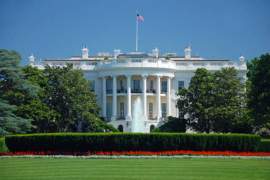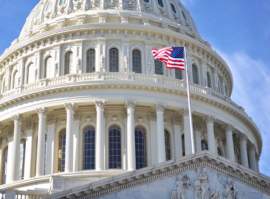
Supreme Court Justices Overview

Background of Justices
The Constitution's provisions for the Justices who make up the Supreme Court are brief and have allowed extensive discretion to legislators and the Court itself in determining the direction of this office. The initial stipulations for the practical questions of operation faced by Supreme Court Justices were dealt with in the Judiciary Act of 1789, the first Congressional legislation.The Justices first assembled to officially hold the Supreme Court in February 1790, at that point numbering six members and tasked with the secondary responsibility of "circuit riding," by which they were required to personally preside over two proceedings at courts in every judicial district each year.
The role taken by Supreme Court Justices was fairly limited for the first decade of the institution's existence, but began to expand with the appointment of Chief Justice John Marshall, who established the principle of judicial review in the 1803 case of Marbury v. Madison. His term lasted until his death in 1834, in all comprising thirty-four years, and helped establish the principle of lifetime terms for Supreme Court Justices. The number of Justices, after several revisions, was fixed at nine in 1869, and the practice of circuit-riding abolished in 1891.
John Jay
John Jay was the first Chief Justice of the United States Supreme Court, appointed in 1789 by President Washington. His reign as Chief Justice helped build the foundation of practices, which helped the Supreme Court Justice system gain recognition as a reputable judicial branch. The time John Jay served as Chief Justice was mostly dedicated to implementing guidelines and regulations for the Court system to follow.
Stemming from his childhood John Jay had always expressed keen interest in governmental politics and he catered to a number of problems that presented itself as a result of war as well as weak practice measures. His time spent as Chief Justice initiated many Federal regulations that provided the strength that Supreme Justice is associated with today. The great advisement John Jay delegated as Chief Justice led to his re-election of the role in 1795, which he declined. He continued to serve the United States as a political influence to the practices of the Government system until he retired in 1801.
John Marshall
John Marshall was appointed as the fourth Chief Justice of the Supreme Court and is documented as the first Chief Justice to hold the longest term in office. John Marshall's views were a direct reflection of the regulations administered in the Constitution. His time spent as Chief Justice enforced all Federal and State laws established to be an extension of what was declared in the Constitution, as well as enforcing the judicial implements of John Jay.
With the Constitution at the time being a new form of conduct, many states and Federal laws offered their own translation of the Constitutional view. John Marshall helped clarify the direction of laws in relation to the Constitution. Many of the rulings made by John Marshall helped streamline the responsibilities and functions within the legislative branches. During his ruling as Chief Justice many other members did not agree with his views on regulating State and Federal practices. However, the beliefs of John Marshall helped strengthen the value of the Supreme Court.
Roger Taney
The fact of Roger B. Taney holding the role as Supreme Chief Justice in 1836 dates back to the controversy accompanied with his position in office during that time. Although the responsibility of Chief Justice at a Supreme Court level is to regulate Federal laws, Roger Taney can be described as the individual most concerned with the powers of the State Government.Many of the cases Roger Tangey ruled against were during a time where a split preference over slavery existed among many individuals. While members were calling for the abolishment of slavery, Roger Taney was enforcing this act as a Constitutional right and ruling against African Americans presented little regard for them as a race. At one point the judgemental view of Taney lead a member of the Supreme Court to resign.
The goal of Roger Taney was to make the abolishment of slavery unconstitutional, which was prevented due to the rise of the Civil War. Roger Taney held his position as Chief Justice until passing away shortly after slavery was abolished.
William Taft
William Taft was the first Supreme court Justice who also assumed the role as President of the United States. Many contributed to the structure of the Federal and State Government practices to the procedures implemented by Taft under his ruling as Supreme Court Justice. Seeing that the court system was very disorganized, Taft created certain Acts to help the process within the Supreme Court run at a smoother pace. His delegation helped the Supreme Court identify important cases while shifting other cases to the appropriate judicial branch.
William Taft spent a good deal of his time traveling and was fascinated by the methods of structure he saw implemented in other countries. His work as Supreme Court Chief Justice helped strengthen all judicial systems within America. He is also responsible for separating the Supreme Court from other judicial branches, placing it in a separate building where they could manage the aspects of their responsibilities away from the traffic associate with other legislative branches.
NEXT: The Short Biography of Charles Evans Hughes




















